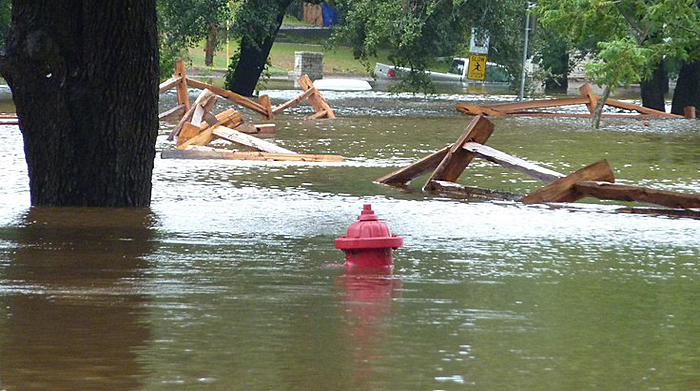Water and Wastewater Plants Facing Rising Flood Risk

Image courtesy of Zap Wizard under Attribution-NonCommercial 2.0 Generic License, resized to 700 x 391 pixels.
Emergency preparedness for water utilities is getting more difficult, as flooding is increasingly threatening low-lying water treatment plants and coastal wastewater plants. Much like power infrastructure, water and wastewater systems were built decades ago, before climate change began making an impact. But when it comes to flood risk, water and especially wastewater systems are in worse shape than electrical infrastructure because they are typically constructed in low-lying areas near large bodies of water.
Understanding the Flood Risk to Water and Wastewater Plants
Water and wastewater facilities are at risk because they are usually located near a body of water –wastewater plants generally discharge into large bodies of water, and water treatment plants are typically located near the bodies of water from which they draw. Adding to the problem is the well-documented deterioration of aging pipes, which many system operators – particularly municipalities – cannot afford to replace.
According to an AP analysis from First Street Foundation, approximately 33% of sewage plants in the U.S. would be at risk of flooding if a ‘mega storm’ were to hit. And a disproportionate number of these at-risk facilities are located along the east coast.
So, the water utility industry has several things working against it:
- Water and wastewater plants are typically built near a large body of water, and climate change is increasing the flood potential of these bodies of water.
- The U.S. water/wastewater infrastructure is in poor shape.
- The U.S. water/wastewater industry is extremely fragmented, dominated by municipally owned systems that do not have access to the funding necessary to implement upgrades.
This begs the question, what can be done to mitigate the threat? Well, I hate to be the bearer of bad news, but really the only thing that can be done in the short term is to be prepared for more frequent and severe flooding, with a heightened focus around optimizing emergency response plans in a way that maximizes response and restoration speed. Simply put, any operator of water and wastewater plants must understand their specific flood risk, accept the risk, and adapt as needed.



